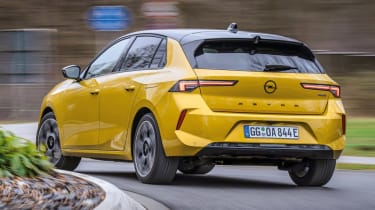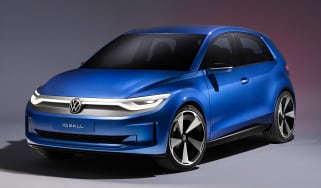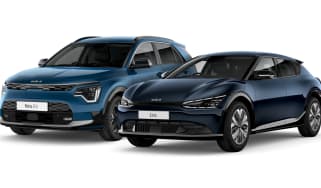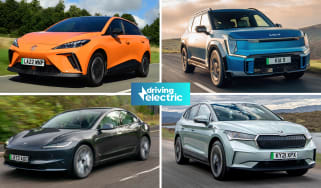Vauxhall Astra hybrid review
A harsh ride and high price tag count against the plug-in Astra, but it look great and makes a lot of sense for company-car users
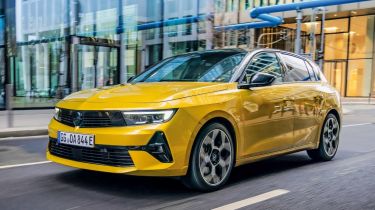
Pros
- Looks great
- High-tech interior
- Strong efficiency and electric range
Cons
- Expensive for private buyers
- A bit cramped in the rear
- Rides quite harshly
| Model | Electric range | Fuel economy | CO2 emissions |
|---|---|---|---|
| HYBRID-e 180 | 42 miles | 201-256mpg | 26g/km |
| HYBRID-e 225 | 42 miles | 201-256mpg | 26g/km |
The family hatchback class is slowly but surely electrifying. These days, you can buy a Volkswagen Golf, Skoda Octavia or SEAT Leon with a battery and plug, while there’s also the non-plug-in Toyota Corolla to consider. The latest plug-in hybrid contenders to arrive are three sister models from the Stellantis Group: the sporty Peugeot 308, the luxurious DS 4 and this: the first-ever hybrid version of the Vauxhall Astra.
In tandem with the arrival of electrified power, the Astra has also had a major cosmetic makeover. While the previous generation had a neat if somewhat anonymous look about it, there’s no missing the 2022 model. With a two-tone roof, distinctive colour options and that instantly recognisable Vauxhall ‘Vizor’ front end, it has instantly transformed from one of the more forgettable family hatchbacks around into a real head-turner.
There’s been a transformation inside, too: the dashboard is now dominated by Vauxhall’s ‘Pure Panel’. First seen in the Mokka compact SUV, this consists of two 10-inch screens behind a single panel, giving the impression of a large uninterrupted display. It looks fantastic, although it's not as intuitive to use as we’d like.
Like its 308 sister model, the Astra will eventually be offered in two plug-in hybrid flavours, called HYBRID-e 180 and HYBRID-e 225. The latter won’t be on sale for a while, though, so for now we’re focusing on the former, which has a combined output of 178bhp from a 1.6-litre turbo petrol engine and electric motor.
According to official testing, there’s no difference in economy or emissions between the two, with both returning a maximum of over 250mpg, emitting just over 25g/km of CO2 and promising more than 40 miles of electric-only driving range. Those last two numbers ensure the Astra hybrid’s competitiveness in a key market – the company-car sector – as they ensure a 12% Benefit-in-Kind (BiK) rating until at least April 2024.
So the Astra looks good inside and out, and the sums add up on paper. But what’s it like to drive? Like most plug-in hybrids, it defaults to electric power if there’s charge in the battery, so you start up and pull away silently. Manoeuvring at low speeds, the tight 10.5-metre turning circle is immediately evident, and once you start to gather speed, you’ll likely be impressed at how smoothly the eight-speed transmission shifts gear.
A top speed of 140mph and 0-62mph of 9.3 seconds should be more than sufficient for everyday driving in town or on the motorway – and enough to make you question why the more powerful and expensive HYBRID-e 225 (which makes 222bhp and gets to 62mph in 7.7 seconds) would be necessary. The car stays refined most of the time, with a harsh engine note only presenting itself if you really accelerate hard.
Nothing wrong with performance, then, but the same can’t be said for ride quality. With the extra weight of the battery on board, this is comfortably the heaviest Astra in the range, and you can feel that weight when you’re crashing over a poor-quality road surface. Tyre noise isn’t well disguised, either.

Space-wise, there’s plenty up front, but those in the back might feel a bit cramped – perhaps partly due to that sweeping roofline. The upcoming Astra Sports Tourer may therefore be a better choice for family buyers, and it’s available with plug-in hybrid power, too.
In sum, the downsides mentioned above, combined with the lack of a premium badge, might make the Astra hybrid's £32,000-plus list price a bit too much to stomach for private buyers. They might be better off waiting for the fully electric Astra-e, which is due to hit showrooms in 2023. For now, though, the plug-in hybrid holds plenty of appeal for company-car users – and the attraction of its distinctive looks and up-to-the-minute in-car tech shouldn’t be underestimated.

